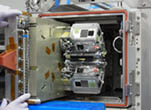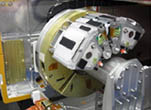This is an archive of information released in the past.
Disclaimer: It may contain broken links or outdated information. Some parts may not function in current web browsers.
*Visit https://humans-in-space.jaxa.jp/en/ for the latest information.

Experiment
- News
- Kibo Utilization Strategy
- Kibo Utilization Plan
- List of JAXA's Utilization Themes
- Experiment Facilities
- Space Environment Utilization
- Archive
Mouse Habitat Unit (MHU)
|
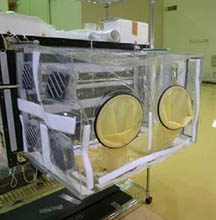 |
|||
The Cell Biology Experiment Facility (CBEF) |
Glove box |
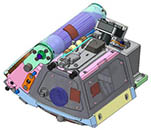 |
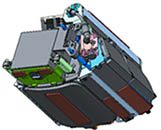 |
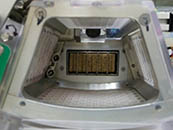 |
Mouse cage |
||
Experiments using mice in space: a key to elucidating the mechanisms of life
Bodily changes in space
As a result of spending a long time in space, even healthy astronauts may experience bone loss, muscle atrophy, loss of a sense of balance, optic disc edema, and cardiomegaly. Measures for such problems are taken in the form of effective exercise, but the mechanisms of such bodily changes are not well known.
Research using mice will reveal those mechanisms.
Past U.S. and Russian space experiments using small animals (including rodents) have shown that the physical changes in human beings as described above have also occurred in small animals. Therefore, the mechanisms may be elucidated by conducting a detailed study, such as investigating the genes of mice.
Rearing rodents in space allows us to analyze the actual effects of microgravity, not only regarding a detailed study on sarcopenia (decrease in muscle mass) and bones but also on how environmental stress in microgravity affects the immune system and central nervous system.
The simultaneous study of both mice and astronauts will also enable mutual evaluation.
Moreover, how human beings adapt to different gravity environments over a long period will also be studied, such as whether future generations will inherit changes in the control of genes caused by the space environment.
Kibo as a platform for an accelerated aging environment
Changes observed in human body in space are quite similar to the accelerated version of changes seen in elderly subjects on the ground. A lack of exercise in space will reduce a person’s bone density ten times faster than that of a person with osteoporosis, while daily muscle loss in the calves of a person in space is double that of bedridden patients and equivalent to the loss seen in senior citizens over a six-month period.
In recent years, the growing number of people suffering from locomotive syndrome (a condition of need for long-term nursing care due to the declining function of bones, muscles and joints) has become a problematic issue. In Kibo, experiments intended to identify the factors that indicate illness at an early stage, and preclinical tests to determine the efficacy and safety of candidate drugs are scheduled. The results are expected to extend the healthy life-span of people.
Rodents allow unified experiment conditions, precise comparison, and tissue analysis that are not possible in human experiments. Experiments using rodents permit the control of both the rearing environment and genes, thereby enabling a precise comparison between microgravity and generated artificial gravity, and a precise analysis of tissues and organs, which cannot be applied to astronauts. The data obtained from rodents and astronauts can prove to be complementary and thus yield even more detailed results.
Collectable data that cannot be obtained on the ground
The features of space experiments are as follows:
- The phenomena of aging can be observed in fast-forward mode, 10-30 times as fast as on the ground. And unlike astronauts who exercise everyday in space, the observed change rates of model organisms are 15-20 times higher than those on the ground.
- Data on longitudinal changes due to a change in only gravity level can be observed. After returning Earth, mice will be monitored in their process of recovery from such aging.
- Effects on the entire body can be studied without having to alter genes or immobilize parts of the body.
Scheduled experiments using MHU
- Transcriptome analysis and germ cell development analysis of mice in space Principal Investigator :Satoru Takahashi, University of Tsukuba
- Multi-omics analysis of human-microbial metabolic cross-talk in the space ecosystem Hiroshi Ohno, RIKEN
| Copyright 2007 Japan Aerospace Exploration Agency | Site Policy |

